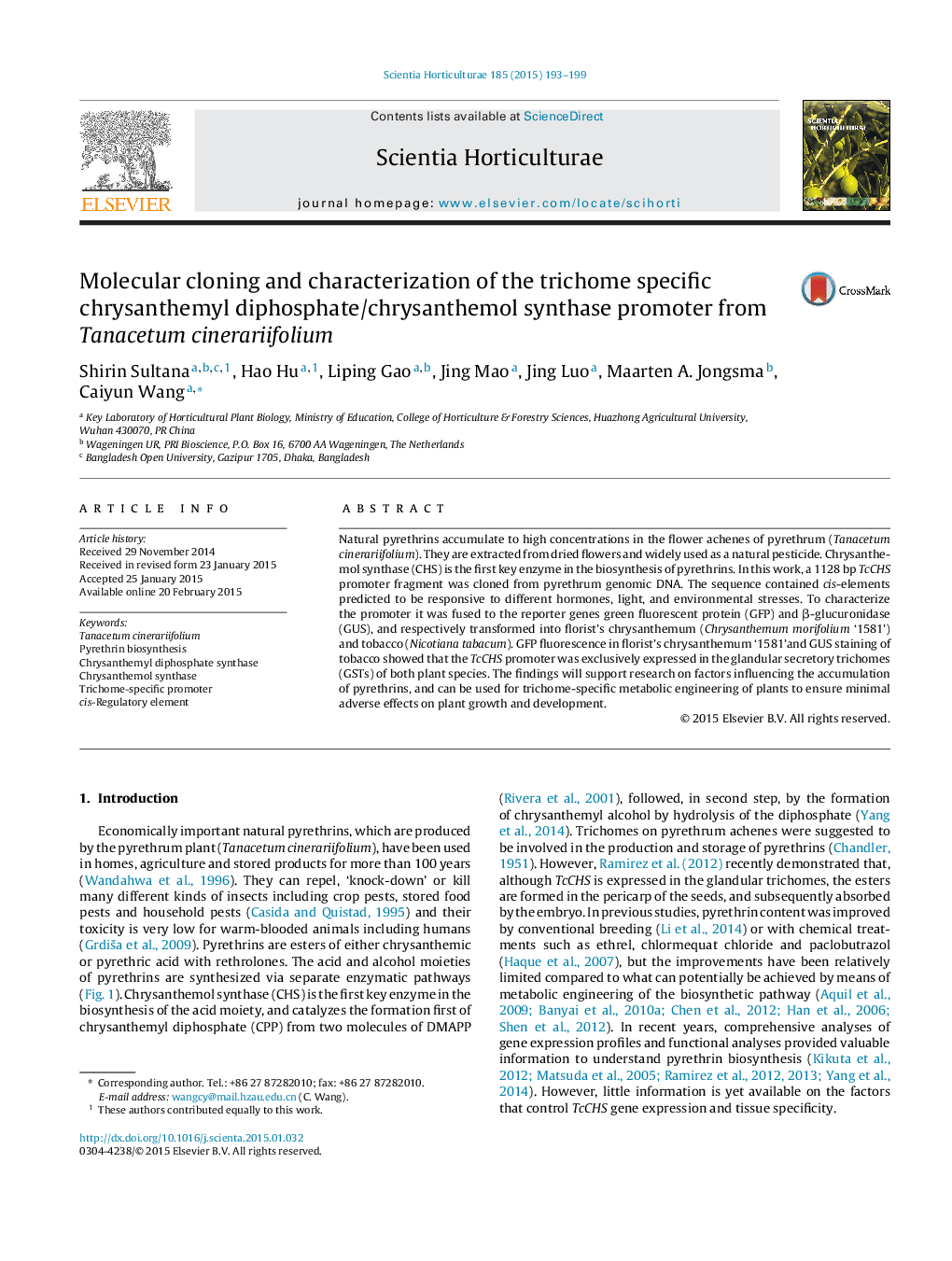| Article ID | Journal | Published Year | Pages | File Type |
|---|---|---|---|---|
| 4566510 | Scientia Horticulturae | 2015 | 7 Pages |
•Molecular cloning of the chrysanthemyl diphosphate/chrysanthemol synthase promoter from Tanacetum cinerariifolium.•Identification of putative regulatory promoter elements.•Promoter-GFP and GUS fusions to establish promoter tissue specificity in florist's chrysanthemum and Nicotiana tabacum.•The TcCHS promoter is trichome-specific in both chrysanthemum and tobacco.
Natural pyrethrins accumulate to high concentrations in the flower achenes of pyrethrum (Tanacetum cinerariifolium). They are extracted from dried flowers and widely used as a natural pesticide. Chrysanthemol synthase (CHS) is the first key enzyme in the biosynthesis of pyrethrins. In this work, a 1128 bp TcCHS promoter fragment was cloned from pyrethrum genomic DNA. The sequence contained cis-elements predicted to be responsive to different hormones, light, and environmental stresses. To characterize the promoter it was fused to the reporter genes green fluorescent protein (GFP) and β-glucuronidase (GUS), and respectively transformed into florist's chrysanthemum (Chrysanthemum morifolium ‘1581’) and tobacco (Nicotiana tabacum). GFP fluorescence in florist's chrysanthemum ‘1581’and GUS staining of tobacco showed that the TcCHS promoter was exclusively expressed in the glandular secretory trichomes (GSTs) of both plant species. The findings will support research on factors influencing the accumulation of pyrethrins, and can be used for trichome-specific metabolic engineering of plants to ensure minimal adverse effects on plant growth and development.
